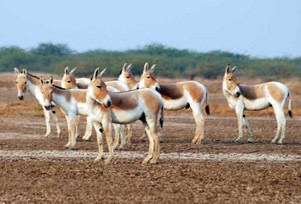Free Courses Sale ends Soon, Get It Now


Free Courses Sale ends Soon, Get It Now



Disclaimer: Copyright infringement not intended.
Context: A division bench of the Gujarat High Court Wednesday issued a notice to the state government and sought a report from it on the licences and permissions it has granted for mining activities within Wild Ass Sanctuary in the Little Rann of Kutch. The Court issued the notice while hearing a public interest litigation (PIL) on ‘illegal’ salt mining and mineral mining activities in the sanctuary.
Details:
Rann of Kachchh:
About the sanctuary:
About Wild Ass:
Worldwide species:
Ecological Importance:
Other fauna:
|
PRACTICE QUESTION Q) Indian Wild Ass is known as the guardians of Rann. Comment. (150 words) |
© 2024 iasgyan. All right reserved